China yesterday held live-fire drills off Taiwan proper for a third consecutive day, with the Chinese People’s Liberation Army’s (PLA) Eastern Military Zone command saying that its exercises focused on surface bombardment and maritime assault capabilities.
China arbitrarily set restricted airspace zones around Taiwan proper, unilaterally changing the “status quo” in the Taiwan Strait and disrupting peace in the Asia-Pacific region, the Ministry of National Defense said.
As of 5pm yesterday, it had tracked about 20 planes and 14 ships operating near the Strait’s median line, the ministry said.
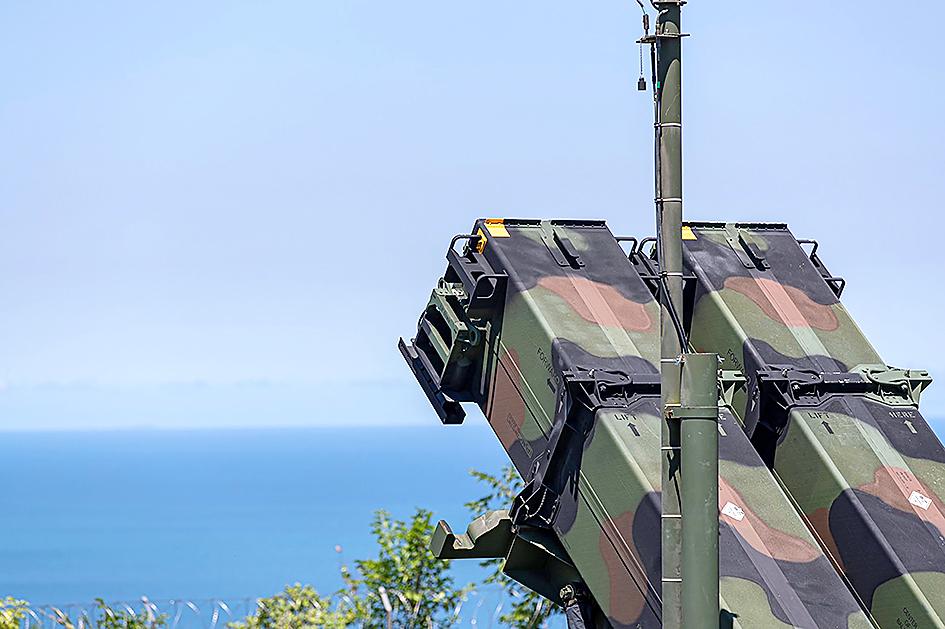
Photo: Military News Agency
About 10 Sukhoi Su-30s and four J-11s crossed the median line, approaching Taiwan proper from China’s Fujian and Zhejiang provinces, while four J-16s, one Y-8 transport plane and one Y-20 refueling plane flew into Taiwan’s air defense identification zone from the southwest and returned the same way, the ministry said.
A photograph released by the PLA yesterday claimed a Chinese navy vessel close to Taiwan’s east coast facing off against a Taiwanese Knox-class frigate. Another photo claimed Chinese planes approaching Taiwan’s airspace, taking pictures of Taiwan’s coast and the Central Mountain Range.
All Chinese warships and planes that crossed the median line were warned and immediately sent back across it, the ministry said, adding that it suspected they were simulating attacks on Taiwan.
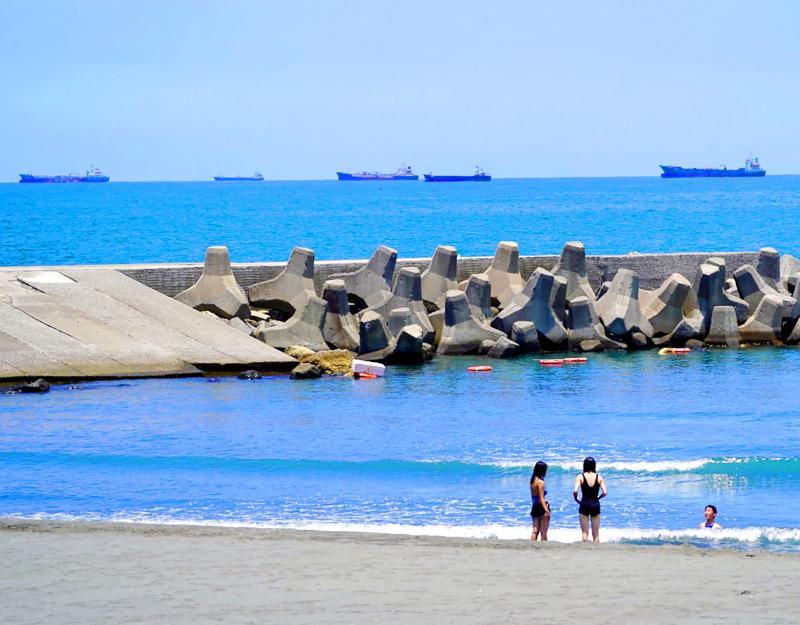
Photo: CNA
The air force yesterday said it had continually monitored Chinese movements, adding that Patriot-III missile systems are ready to defend the nation’s airspace.
In Taipei, the Military News Agency released pictures taken by the air force showing its Air Defense and Missile Command taking position.
A major surnamed Chou (周) said the command had finished combat preparations, as instructed by its superiors, and was ready for any circumstances.
Taiwan is tracking enemy planes and missiles, and its soldiers are resolved and ready to defend the nation, Chou said.
Meanwhile, the drills impeded shipping, with commercial vessels reconsidering loading cargo at Taiwanese ports, potentially creating delays for shipments of electronic goods.
Ship owners, worried about the possibility of missile strikes, are choosing to idle vessels and burn extra fuel until the drills are over.
Ships are dropping anchor at sea to avoid a drill zone off Kaohsiung, said Jayendu Krishna, deputy head of consultancy Drewry Maritime Advisors.
The zone, one of the largest areas where China is holding drills, is 15 nautical miles (27.78km) from the entrance of the Port of Kaohsiung.
The Strait is a key route for supply chains, with almost half of the global container fleet passing through it this year.
While vessels are continuing to travel through the Strait during the military exercises, they are navigating around the drill zones.
The Maritime and Port Bureau on Thursday told ships to avoid areas east of Taiwan in which China said it would hold drills until tomorrow.
China is also practicing firing weapons in the southern part of the Yellow Sea, the Maritime Safety Administration in the eastern Chinese city of Lianyungang said.
The drills would last for 10 days until Aug. 15, it said.
In Taipei, the military yesterday said that its units on Kinmen County’s main island and its nearby smaller islands detected four uncrewed aerial vehicles flying near the coast.
The four drones were spotted flying over restricted sea areas off the main island, Lieyu Island (烈嶼) and Beiding islet (北碇島), the army’s Kinmen Defense Command said.
Taiwan fired warning flares to repel the drones, which were believed to be operated by the PLA, Kinmen Defense Command Major General Chang Jung-shun (張榮順) said.
Similar drones were also detected flying over Lienchiang County’s Liang Island (亮島) and Dongyin Island (東引), the army’s Command Headquarters said.
Drones had been spooted near Kinmen’s main island and Beiding islet on Wednesday night, ahead of the Chinese drills.
Additional reporting by Wu Su-wei

People can preregister to receive their NT$10,000 (US$325) cash distributed from the central government on Nov. 5 after President William Lai (賴清德) yesterday signed the Special Budget for Strengthening Economic, Social and National Security Resilience, the Executive Yuan told a news conference last night. The special budget, passed by the Legislative Yuan on Friday last week with a cash handout budget of NT$236 billion, was officially submitted to the Executive Yuan and the Presidential Office yesterday afternoon. People can register through the official Web site at https://10000.gov.tw to have the funds deposited into their bank accounts, withdraw the funds at automated teller
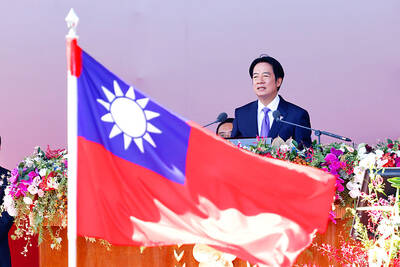
PEACE AND STABILITY: Maintaining the cross-strait ‘status quo’ has long been the government’s position, the Ministry of Foreign Affairs said Taiwan is committed to maintaining the cross-strait “status quo” and seeks no escalation of tensions, the Ministry of Foreign Affairs (MOFA) said yesterday, rebutting a Time magazine opinion piece that described President William Lai (賴清德) as a “reckless leader.” The article, titled “The US Must Beware of Taiwan’s Reckless Leader,” was written by Lyle Goldstein, director of the Asia Program at the Washington-based Defense Priorities think tank. Goldstein wrote that Taiwan is “the world’s most dangerous flashpoint” amid ongoing conflicts in the Middle East and Russia’s invasion of Ukraine. He said that the situation in the Taiwan Strait has become less stable
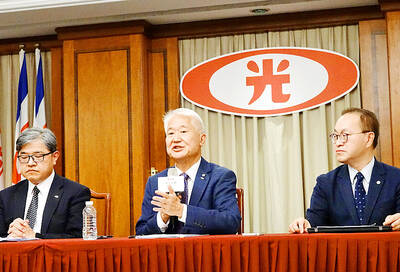
CONCESSION: A Shin Kong official said that the firm was ‘willing to contribute’ to the nation, as the move would enable Nvidia Crop to build its headquarters in Taiwan Shin Kong Life Insurance Co (新光人壽) yesterday said it would relinquish land-use rights, or known as surface rights, for two plots in Taipei’s Beitou District (北投), paving the way for Nvidia Corp to expand its office footprint in Taiwan. The insurer said it made the decision “in the interest of the nation’s greater good” and would not seek compensation from taxpayers for potential future losses, calling the move a gesture to resolve a months-long impasse among the insurer, the Taipei City Government and the US chip giant. “The decision was made on the condition that the Taipei City Government reimburses the related
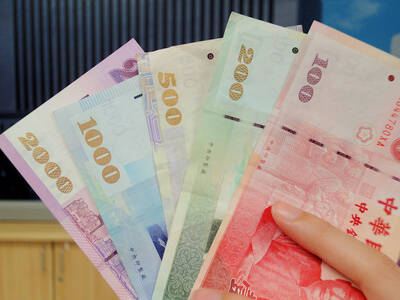
FRESH LOOK: A committee would gather expert and public input on the themes and visual motifs that would appear on the notes, the central bank governor said The central bank has launched a comprehensive redesign of New Taiwan dollar banknotes to enhance anti-counterfeiting measures, improve accessibility and align the bills with global sustainability standards, Governor Yang Chin-long (楊金龍) told a meeting of the legislature’s Finance Committee yesterday. The overhaul would affect all five denominations — NT$100, NT$200, NT$500, NT$1,000 and NT$2,000 notes — but not coins, Yang said. It would be the first major update to the banknotes in 24 years, as the current series, introduced in 2001, has remained in circulation amid rapid advances in printing technology and security standards. “Updating the notes is essential to safeguard the integrity